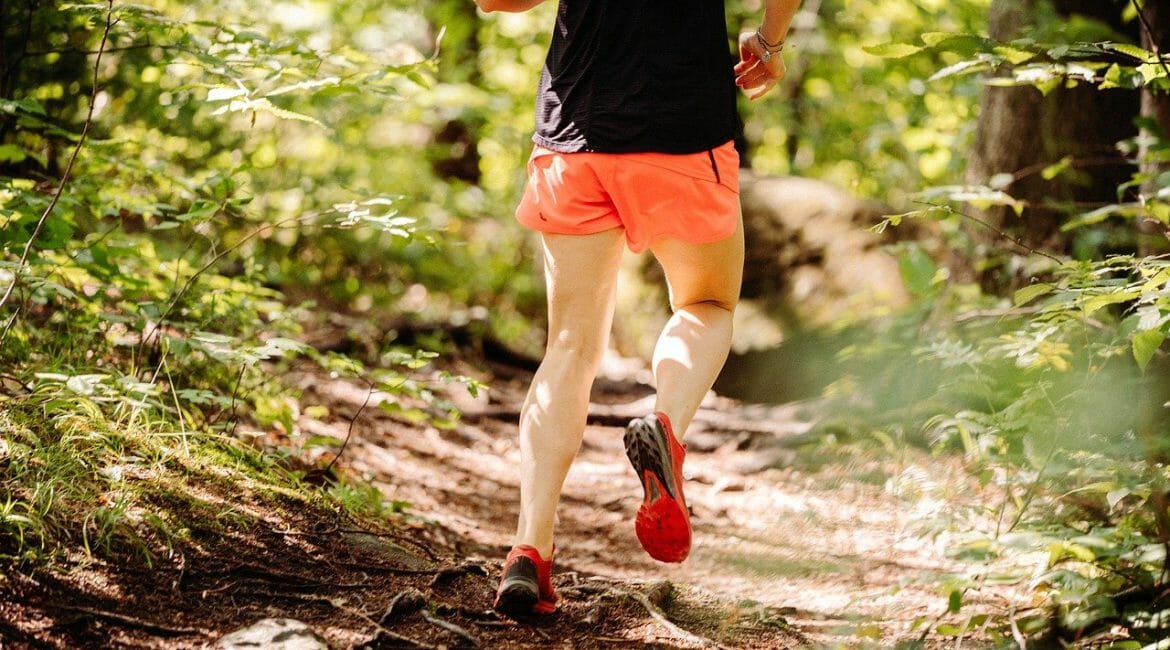Back story…
As a boy, I was drawn to long-distance running, particularly cross-country. I was intrigued by stories and films of races featuring competitors charging through forests, jumping over logs, and splashing through streams.
Growing up in Brooklyn, we played all the usual street games, which included running races. I was reasonably fast enough to compete in the dashes, but I really enjoyed challenging my friends to race around the entire block. As a twist, we would run in opposite directions from the start/finish line – usually a seam in the sidewalk in front of someone’s stoop. The race involved some strategy, saving energy to carry over the entire lap. We’d “slap five” when we passed each other, making note of who was ahead. Then came the moment we turned the final corner and we’d take off in a sprint to the finish!
When my family moved to Long Island, I discovered the L.I. Greenbelt Trail by chance while out for a run of no particular importance. When I started training again during the running boom of the ’70s, I found the trails to be a great place to do long runs. I could focus on my workout, going long distances without the distraction of vehicles, bikes, and people. Enjoying the peaceful feeling of nature was something I really enjoyed. I trained for my first two marathons running most of my miles on those trails. It had no negative impact on my foot speed in races and possibly helped me avoid injuries from long-term pounding on hard surfaces.
For me, a major upside to living on Long Island and running on its trails is the relative safety from non-human predators. We’re at the top of the food chain! No bears, moose, or elk, no mountain lions, poisonous snakes or scorpions, and mercifully, no alligators. A handful of coyotes, however, have been sighted in recent years. I’m told that they don’t pose a threat to humans and are easily scared off by making noise when encountered. The greatest threats to humans are from ticks, poison ivy, and other humans.
Why you should consider trail running…
- It’s a good change of pace from your usual training runs on streets and roads. — Physically and mentally, trail running is a departure from your daily running routine. It is softer on the feet but works in different muscle groups. You’re forced to modify your running gait. Embrace the change!
- Shelter from the elements. — Warmer in winter, cooler in summer. In winter, even without leaves, you’ll find that the sheer mass of the trees creates a buffer from the wind. In summer, trails offer a great respite from the sun and heat.
What do you need — Equipment…
Footwear: You don’t need anything special. Most running shoes are fine for Long Island. Consider light trail running shoes for mud and wet conditions.
Safety…
Here’s a list you need to bring with you on a trail run:
ID, phone, credit card, cash, water bottle in a waist pack, at the very least. Hydration vests can be pricey are worth it if you’re going out for a long day. I don’t care for hand-held water bottles. They’re okay for walking but can throw off your run gait and can be detrimental if you need to break your fall. Don’t forget sunscreen and insect repellent. For longer runs, deeper into the woods, consider a larger pack or vest, with a snack, flashlight, whistle, pepper spray, napkins and wipes, bandages, and an emergency foil blanket.
Experiment with different packs and belts. I wear one on all but the shortest neighborhood runs. I follow the concept of “train heavy-race light.” This means I will carry more during training, just in case, especially on trails. The same goes for running shoes. I train off-road with heavier trail shoes, and train on roads with shoes that offer more support and cushion. On race day I usually go lighter, wearing shoes that I keep for track workouts or intervals. You can go without carrying fluid in races unless you can’t digest whatever is offered at water stops.
Considerations…
If you’re new to trail running, go with a group or a partner. Let someone know your route. If new to a trail, keep the time and distance short and go mid-morning to early afternoon, especially if alone. You’ll have plenty of daylight and other people around so you won’t feel isolated.
Additionally, if you’re just starting out, or new to a particular trail, go easy. Start out by simply walking, getting a feel for the surfaces. Move up to a jog for a while, then increase your pace if you feel more comfortable. Make it a day of fun exploration, a little out of your comfort zone without being dangerous. You may discover that blending in an occasional trail run is just what you need to break up the monotony of your training!
I discourage using headphones/earbuds on the trails. You need all your senses working, for your safety and enjoyment. Be in the moment – take in all that surrounds you in nature.
Many people walk with dogs, sometimes off-leash. On narrow trails, I always stop my run and let them pass. You may encounter horseback riders. Stop and give them room to pass. Mountain bikers can surprise you with their speed. Be alert and give them the right of way.
A few more things about safety. Stay on established trails and out of the brush. It’s the best way to avoid ticks and poison ivy. Do check for ticks when you’re done. They can nestle in your most intimate places! When it comes to human encounters, use common sense. Most people are polite and considerate. That being said, do your best to avoid conflict. Alone on a trail is not an ideal place to get into an unpleasant exchange. If something you see or experience should rise to a reportable level, do so when you’re back in a place that is safe.
Where to run…
If you live on Long Island, here are my favorite spots to run:
- L.I. Greenbelt Trail, Nassau, and Suffolk. Stillwell Woods Preserve, Woodbury
- New York State Parks, especially Heckscher for flats; Sunken Meadow for hills; Bethpage for trail variety; Also Caumsett, Blydenburgh, Connetquot parks and trail networks on Eastern Long Island; Norman Levy Park, Merrick is great for novices.
- Consider road trips – upstate NY, CT, PA, or wherever you live or travel.
Addendum:
Bio:
Steve Gerardi is a member of WeREndurance and Certified Level 1 Running Coach, and, he is a running, cycling, multi-sport enthusiast.



